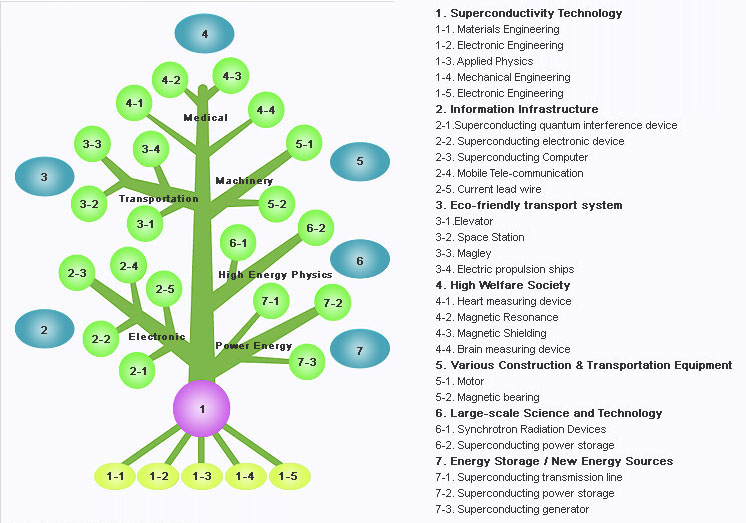
- >
- Superconductivity
- >
- Superconductivity Applications
Superconductivity Applications
The applications of superconductors can be divided depending on the type of superconducting materials applied or application fields.
If the application is divided depending on the type of materials, there are wires and thin films. In wire applications, there are transmission lines without energy loss, superconducting magnets to generate strong magnetic fields or stable magnetic fields, electric power systems to generate or transport current such as energy storage apparatuses, motors, and generators and transport sectors for superconducting magnetic levitation train, superconducting propulsion ship, etc.
In the case of thin-film applications, there are passive elements by applying low current loss characteristics of thin-film and active elements by applying superconducting joins such as Josephson joins, etc. In passive element applications, there are low loss high frequency communications, etc. and in active element applications, bio-magnetic applications such as SQUID (Superconducting QUantum Interference Devices), and high speed digital element applications can be possible.
When broken down by the application fields of superconductors, as shown in superconductivity applications in the trees on the right, the applications can be divided into sectors for medical, transportation, electronics, electric power, energy, high energy physics, machinery, etc. In the medical field applications, there are SQUID, MRI (Magnetic Resonance Imaging), NMR (Nuclear Magnetic Resonance), self-shielding device, etc. MRI can diagnose cancers of the very early state as well as dysfunction of human body including brain by transmitting strong magnetic fields produced in superconducting coil to the human body so human shall be free from fear of the diseases.
In addition, if super sensitivity magnetic sensor by SQUID is applied, magnetic corresponding to 1/150 billion of current geo-magnetic can be monitored and monitoring of subtle changes in brain magnetic and interpretation of brain activity are possible.

If superconducting technologies are applied to the transport system, they can apply to the eco-friendly electron propulsion ship, MagLev trains, space stations, elevators, etc.
By applying magnetic fields generated by superconducting magnets, submarines which are possible to move at high speeds without the sound can be constructed and linear motor car (MagLev) with superconducting magnetically levitated at speed more than 500km per hour can also be built so daily commuting from Seoul to Busan within one hour is possible without weather conditions such as snow or rain.
In the field of electronic, products (current leads, mobile communication base stations and satellite communication equipments, supercomputers which are the similar size of current desktop, superconducting electronics, superconducting quantum interference device, etc.) to create the basis of information infrastructure are possible to be manufactured.
In the field of high-energy physics, the superconductors can apply to the super-accelerators and radiation tube devices. Using a strong magnetic field of superconducting magnets for nuclear fusion generation, new concept of energy such as an artificial sun can be produced. Nuclear fusion generation attracting attention as a new energy resource in the 21st century can produce almost no radioactive waste and clean energy by using deuterium contained indefinitely in seawater as fuel.
In the field of mechanic, the superconductors can apply to the superconducting motors, contact free magnetic bearing, fly wheel, etc.
High-efficiency, eco-friendly electric energy-related equipments can be applied in South Korea which is lack of natural resources.
From the basic design, compact, and high efficiency power devices such as power cables, generators, transformers, circuit breakers, etc. can be manufactured, if superconducting coils are applied.
When using superconducting power storage (SMES), the surplus power at night in each region, or continent can be stockpiled in the superconducting power storage device and can transport to the demanding region during the day without the loss of power. By doing this, efficient use of energy, as well as the international trade in electricity are possible. So if environmentally friendly superconductors are utilized like these, power consumptions and losses are extremely lower than those of existing devices and operation speeds are fast, and sensitivities are increased at the same time.
